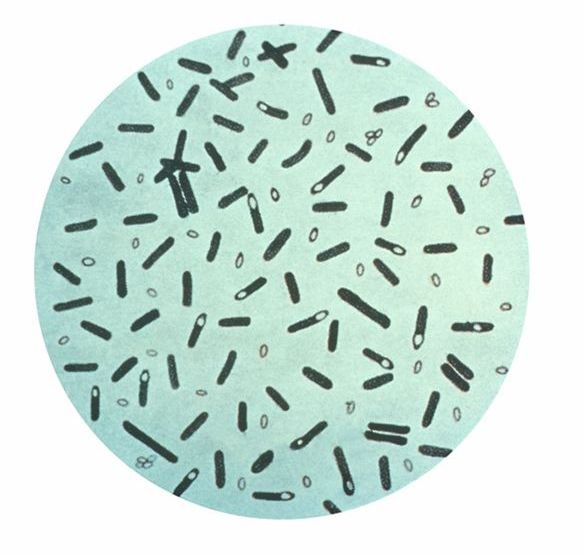Frozen Food Safety: Recommended Best Practices for Freezing & Thawing Food
Concerns About Proper Handling of Frozen Foods
Increasing one’s awareness about proper handling procedures for frozen food safety lessens the risks of acquiring foodborne diseases. The latter can be caused by a pathogenic bacterium known as <em>Clostridium botulinum</em>.
The U.S. Centers for Disease Control and Prevention is concerned that incidences of a life threatening disease known as botulism, which took place in the U.S. in 2001, was contracted by individuals who may have eaten improperly handled frozen fully-cooked products.
The concern about pathogenic bacteria is they cannot be seen or be smelled, and the symptoms of the foodborne disease take place several hours after eating contaminated food. In the case of botulism, which is said to be a rare paralytic disease caused by nerve toxins. Its symptoms include:
- blurred vision
- slurred speech
- dry mouth
- difficulty in swallowing
- muscle weaknesses
- drooping eyelids
These may occur from eighteen to thirty-six hours after ingesting food that is contaminated with the Clostridium botulinum pathogens.
In line with this, the US Food Safety and Inspection Service (FSIS) has released additional policy guidelines for frozen food safety, and are provided below:
Buying Precautions
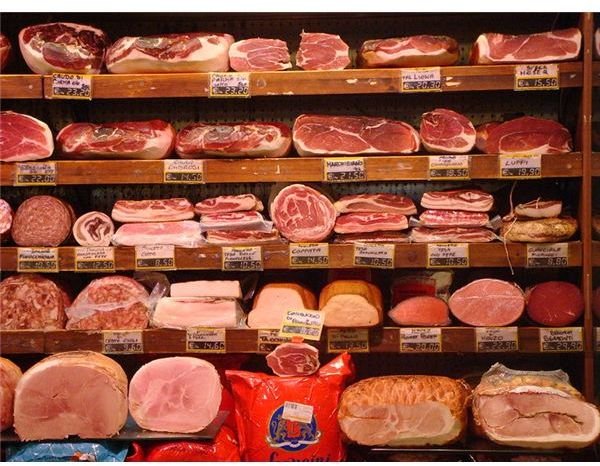
1. Do not buy frozen food products that come in torn, punctured, damaged, or partially opened packages, since these denote exposure to external elements, including those present in the air.
2. Buy only items that are frozen-solid and do not show signs that they may have thawed and refrozen. Take note of juices that may have leaked during thawed conditions or, which may indicate that they were not immediately frozen after undergoing food processing.
3. When buying frozen food products, the best practice is buying only from reputable dealers because they are constantly being inspected to ensure proper handling of foods that require freezing.
4. Always check the “use by”, “consume buy”, or “sell buy” dates, as well as the USDA inspection mark, since this indicates that the frozen food product was prepared and processed under controlled conditions.
Transporting From Store to Home

1. When going out on errands that include food-buying chores, make sure that the latter is the last in your order of priorities. That way, frozen foods are brought straight from the grocery to your home. Frozen food products have to be stored immediately, or thawed properly, before cooking.
2. Avoid leaving the purchased grocery foods inside the compartment of the car for a long time. Some of your food purchases may thaw sooner than you think, especially during hot weather conditions.
3. During colder temperatures, canned goods or eggs left in the compartment or basement at freezing temperature may accidentally freeze, which in both cases can affect the quality and safety of these foods.
4. Cans that became swollen because of accidental freezing should be thawed first, inside the refrigerator, before opening. However, check the contents only by sight and smell but never ever taste them. If the contents look bad, appear discolored, or have a foul smell, do not eat them, but make sure to seal them tightly in a plastic bag before throwing them in a bin. Do not allow anyone or any animal to scavenge the discarded food.
5. Eggs that have been accidentally frozen should not be eaten because there is the possibility the eggshells cracked at freezing point. However, if after careful inspection, you’ve made sure that the shell did not crack, thaw them inside the refrigerator. Still, the quality of the yolk may no longer be the same as that of a regular yolk and may not blend well.
6. Frozen food transported from the grocery to home should be given attention right away; avoid the habit of allowing it to thaw at room temperature but instead place it inside the refrigerator if you’re about to cook the food. Otherwise, place it in freezer immediately.
Find the continuation of these food safety practices for frozen foods on the next page.
Frozen Food Safety Practices at Home

1. Understand that freezing at 0 °F does not destroy whatever bacteria, yeasts, or molds are present in raw food; it only inactivates them. Given the right temperature and condition, thawed frozen food must be handled just like any perishable item in terms of cooking or eating. The microorganisms can be reactivated and multiply once the food is removed from cold storge.
2. It’s always best practice to rapid-freeze the food to prevent the molecules from forming large ice crystals. Frozen food with large crystals can cause frozen meat to drip out its juices during thawing.
3. Packages should not be stored stacked on top of each other; instead, they should be laid out in single layers, unless the packages being stacked are already frozen solid.
4. Ideally, keeping the freezer door closed most of the time, allows longer storage, since it maintains the freezer temperature at a constant zero or below -zero degree level. Use a separate freezer compartment for food that does not require long-term food storage.
5. Another frozen food safety practice is to keep an appliance thermometer inside the freezer compartment to allow temperature-checks. This is especially important when power outages or freezing mechanism malfunctions occur.
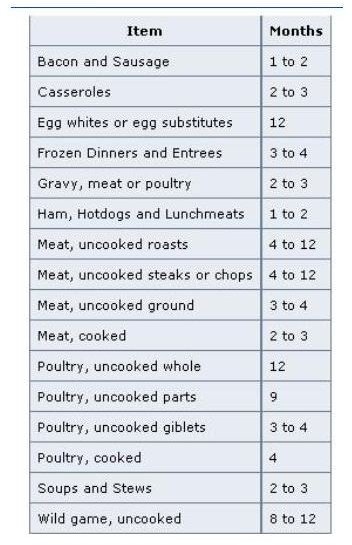
6. Keep a freezer storage chart as a ready reference to determine the optimum freezing time for a particular food. Although proper freezing can keep the food safe for an indefinite period, observance of the ideal freezing time keeps the food at its best quality. (Click on the image to get a larger view or click <strong><em>here</em></strong> for a downloadable copy available at Bright Hub’s Media Gallery).
7. Remember to cook thawed frozen food properly, because certain food parasites can be destroyed only by thorough cooking.
8. Discard any thawed, frozen food with a rancid smell or with off-odor, as it denotes food that has been over-stored.
9. When freezing fresh meat or poultry in their original packages, make sure to overwrap them to allow for long-term food storage and to prevent their permeability to air, which may diminish food quality and safety.
10. Freezer burn is caused by air, which contacts the food surface; this does not make the food unsafe, it only diminishes the quality. Freezer burn may appear as grayish brown and leathery dry spots. Do not include said portions by cutting them off before or after cooking the food.
11. In cases where the overwrapping gets accidentally torn or ripped while in the freezer, make it a point to add additional overwraps, or rewrap if necessary.
12. Color changes in stored meats can also be caused by abnormally long storage. Stored, frozen poultry may show some bone darkening when thawed because the natural pigments may seep through the porous bone parts.
13. Frozen, fully cooked food and vegetables that manifest dulled colors denotes prolonged storage beyond what is normal, or it may be due to improper packaging that caused the food to dry-up.
More frozen food safety practices are explained on the next page.
Safe Food Thawing Procedures
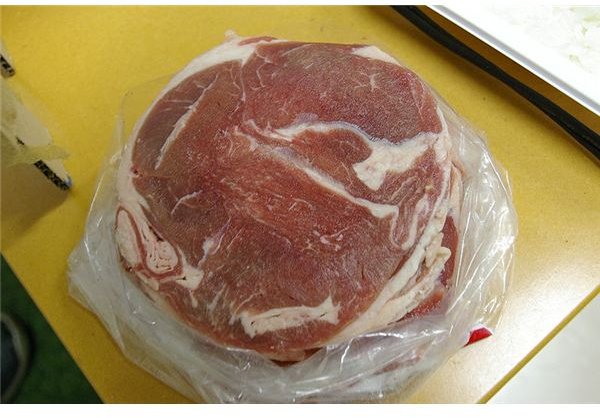
1. Observe frozen food safety procedures by thawing foods by any of the following safe methods:
-
Thaw food inside the refrigerator with the temperature set at 40 °F or below. Large items, like turkeys, may take several days to thaw while inside the refrigerator. The approximate thawing time can be estimated at approximately one day for every five pounds of weight. In addition, food that is thawed using this method can be refrozen even if uncooked, albeit with diminished quality.
-
Immerse the frozen food in cold water for faster thawing, but be sure to place the item inside a leak-proof plastic bag before immersing. While in the process of thawing, check to see if the water is still cold, and add additional cold water when necessary.
-
Use the microwave to defrost food, but be sure to cook the food immediately, because some portion may have begun to cook during the defrosting process.
2. Leftovers prepared from cooking thawed, raw foods should be stored inside the freezer compartment and could last from three to four days.
3. Cooked leftovers that were allowed to remain outside of the refrigerator for more than two hours should no longer be kept frozen.
Keeping Frozen Food Safe during Power Outages
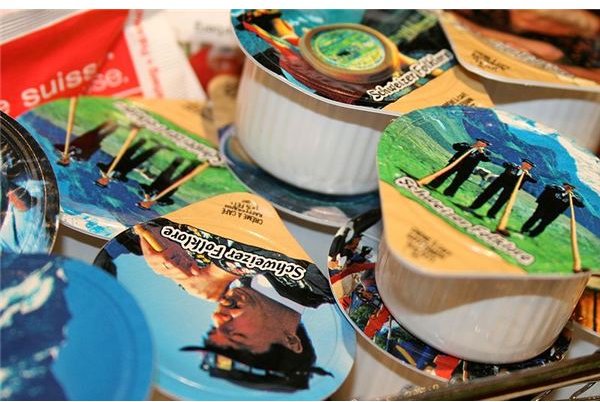
1. If the freezing mechanism fails, and a repair man is on the way, keep the freezer door closed to keep the foods frozen and safe.
2. Do the same during outages, and if it seems the power will not be back for an indefinite time, it is best to get some dry ice or bags of ice while the supply is still available.
3. Arrange the frozen foods by grouping them closer together in order to retain the freezer’s coldness more effectively. However, make sure meat and poultry products are properly segregated to avoid their juices dripping and oozing onto other food items.
4. A freezer full of frozen food could keep the food frozen for up to two days as long as the freezer doors are kept shut. However, the freezer compartment of a refrigerator does not have the same capability as a freezer-dedicated appliance.
5. Once the power is back on, use the appliance thermometer to determine the food’s temperature. If the temperature inside the freezer is at 40 °F or lower, it would be safe to refreeze the raw food, since the effect of the power outage merely simulated thawing conditions inside a refrigerator. On the other hand, if the temperature is at 40 °F or even warmer, discard foods that have been thawed for more than two hours, including those that may appear to have been contaminated by the thawing out of the other defrosted items. Soft or melted ice-cream should not be refrozen.
These frozen food safety practices are important things to remember, in order to avoid unexpected or mysterious illnesses that may arise from foodborne bacteria.
Reference Materials and Image Credit Section:
References:
- https://www.fsis.usda.gov/factsheets/focus_on_freezing/index.asp#19
- https://www.fsis.usda.gov/factsheets/focus_on_freezing/index.asp
Image Credits:
- FSIS Food Storage Chart - https://www.fsis.usda.gov/factsheets/focus_on_freezing/index.asp
- https://commons.wikimedia.org/wiki/File:Grocery_store_in_Rome.jpg
- https://commons.wikimedia.org/wiki/File:Riverview_Resource_Centre_Woodhall.jpg
- https://commons.wikimedia.org/wiki/File:Herb_Knudson’s_Surgical_07.jpg
- https://commons.wikimedia.org/wiki/File:Kaffeerahmdeckeli.jpg
- https://commons.wikimedia.org/wiki/File:Thawed_Lamb.JPG
